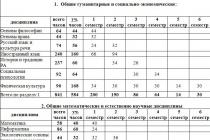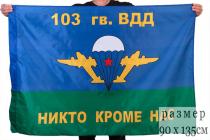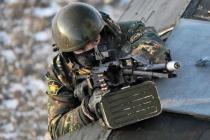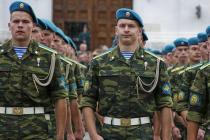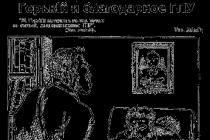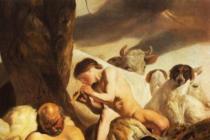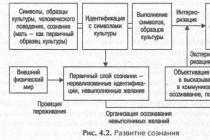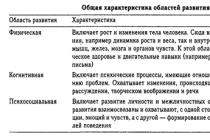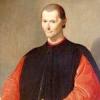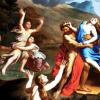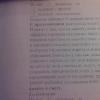M. Gorky’s novel “Mother” played a huge role in the development of the social thinking of many generations of readers and marked a new milestone in the development of Russian and world culture. It is no coincidence that Gorky’s “Mother” became a reference book for many Russian revolutionaries of that time.
At the center of the story is Pavel Vlasov’s mother Pelageya Nilovna. The work is structured in such a way that Nilovna is a participant or witness to all the events described. The novel tells about the painful process of overcoming slavish feelings of obedience and fear in people, about the complex transformation of a person from a victim into a fighter. And Nilovna in this regard is the most striking and convincing example.
Nilovna's path is complex and contradictory. It was not so easy for a woman who had lived most of her life in submission and fear to free herself from the old. Pelageya Nilovna experienced all the bitterness of the plight of a working man's wife. She is oppressed by poverty, a drunken and rude husband, religiosity, and the realization that “everyone lives like this.”
At the beginning of the novel we see a timid, submissive woman, downtrodden by a life of servitude, afraid of people. She teaches her son to be wary of people, because they “hate each other.” Nilovna is deeply convinced of this.
Having learned that her son was reading forbidden books, she was at first frightened, but then she felt in her heart and then with her mind she understood that her son and his comrades were right.
Gorky's heroine unexpectedly finds herself in a different environment, in an environment of people of faith and self-sacrifice, in an environment of devotion to the cause of the future. Watching Pavel's comrades, Nilovna realized that the revolutionaries were good people, and she fell in love with them as if they were family.
Nilovna willingly begins to carry out her son’s instructions and is gradually drawn into revolutionary work. After Pavel's arrest, Nilovna carries leaflets to the factory so that the work started by her son and his friends does not stop.
Gradually, from a dark, downtrodden, silent creature, she turned into a person who knows the truth and confidently brings it to people. The confidence that she can help in the revolutionary struggle straightens Nilovna’s soul.
Previously, her range of interests was poor, limited to everyday concerns. Her love for her only son grew into a great maternal feeling for all fighters for the liberation of the people. Thus, the meaning of the novel's title expanded to a symbol.
The knowledge that Nilovna’s actions bring significant benefits to the revolutionary struggle fills the woman’s heart with pride and is the basis for her sense of self-respect. Not only Nilovna is proud of her son, but Pavel is also proud of his mother, who has become dear to him in spirit.
This spiritual community strengthens and fills with deep content the love of mother and son. The process of spiritual enrichment was complex and difficult, but Nilovna overcame the difficulties.
In Nilovna’s first propaganda speech at the May Day demonstration, her idea of social struggle still coexists with religious consciousness. Gradually her horizons expand. In the village of Nikolskoye, Nilovna skillfully conducts propaganda work with the peasants. After Pavel’s trial, the mother did not succumb to grief; she continued her son’s work. Arrested at the station and beaten by the gendarmes, Nilovna strains her last strength to throw leaflets with Pavel’s speech at the people. A fiery call bursts from her chest: “Gather, people, your strength into a single force.”
After all, the main thing is that Nilovna is imbued with great love for the world, for people, for the people. The writer shows the revival of Nilovna. “It seemed like thousands of lives were speaking through her lips,” the writer notes.
The image of Nilovna is perceived as the personification of the enormous changes that have taken place in the minds of people who have embarked on the path of revolutionary struggle. In the novel, Gorky creates the image of a revolutionary woman, for whom all fighters for truth are her children.
Great is the merit of Gorky, who in the novel “Mother” created the image of a simple Russian woman from the people, entering the world of the revolutionary liberation struggle, spiritually reborn from an oppressed state.
Image of Pavel Vlasov
Novel"Mother" reveals a completely clear position of the author in relation to social transformations; the work is imbued with the pathos of the struggle for the reconstruction of life, which for a long time gave rise to a very one-sided assessment of it within the framework of Soviet ideology. Behind the “heroic struggle of the new generation of revolutionaries” they did not notice / or did not want to notice / living people, with their internal contradictions, suffering, and moral quests. And it was precisely the inner spiritual world of man that interested the greatest Russian writers, whose works are recognized as classics of world literature. A one-sided approach to this work, imposed by communist ideology, undoubtedly cannot satisfy the modern reader.
It would probably be more appropriate to consider this work by exploring the spiritual world of the heroes. Thus, the best feelings arising in the hearts call people to the service of a high and bright idea. But when this idea overshadows everything else, enslaving a person, it suppresses in his soul the very feelings that prompted him to serve it.
This paradox is tragic. And it manifests itself most clearly in the image of Pavel Vlasov, who until recently was considered as unconditionally positive. But it is here that the “obsession with an idea” manifests itself most strongly, and it is here that this phenomenon takes on the most destructive forms. The desire for his own high goal, developing into fanaticism, suppresses in his soul such eternal human feelings as sons, love, love for home, for a woman. Cruelly, unfilially, he tells his mother that he is doomed to die for his idea, he does not want to listen to it before the demonstration.
The image of Pavel Vlasov, a revolutionary worker, largely determines the innovative essence of M. Gorky's novel. This image embodies the main meaning of historical time, those trends that are directed into the future.
In our opinion, analyzing the image of Paul cannot be limited to just searching for an answer to the question: how did an ordinary working guy master the theory and practice of revolutionary struggle? After all, Paul’s path is connected with internal growth, with the formation of character, with decisive changes in the psychology of the working man.
Let's consider one of the most striking episodes where the greatness of the spirit of the young revolutionary, the strength of his ideological conviction, and unshakable determination are fully revealed. There is a situation in the novel “Mother”: during the May Day demonstration, there comes a moment when the head of the crowd “as if hit something”: the street was blocked by a gray wall of soldiers. From this silent, motionless wall, a cold breath blew across the workers, and people backed away, began to move to the side, pressing themselves against houses and fences. But Pavel’s voice still sounded clear and distinct.
“Comrades!” said Pavel. “All our lives forward - there is no other road for us!”
Next to Pavel at the demonstration are his comrades - people who consciously chose the path of struggle and did not flinch when meeting the soldiers. Why is Pavel still ahead? Why does he insist on his right to carry the banner? Of course, he is not guided by ambitious considerations, but by the interests of the cause he serves: he was the first to begin the work of educating the masses in the settlement, he stood at the head of the Social Democratic circle, people came to him for advice, they believed in him. He represented the party of revolutionaries, and when the party led the political struggle of the workers, he had to stand in the most visible and dangerous place. The attitude of the workers to revolutionary propaganda, the truth that was dearer to Paul than life, depended on this.
The first bid for independence was a protest against the beatings of his father. The fourteen-year-old teenager stopped the hand raised above his head and firmly stated: “I won’t give in again...”.
More serious evidence of the birth of personality is the dissatisfaction with the usual life of factory youth and the search for a different path. When Pavel tells Nilovna that he is reading forbidden books, that he can be put in prison for this, the mother, measuring with her heart all the troubles that threaten her son, will sigh: “You have changed dangerously, oh my God!”
An independent, bold mind and great courage were needed in order to, contrary to centuries-old traditions, contrary to the rules and customs to which both fathers and grandfathers obeyed, leave the beaten path, choose the difficult path to the kingdom of justice. Didn't this mean taking that step forward that only heroic natures can do?
And Paul will always be ready to face danger in the name of the Truth that he understood. When there is unrest at the factory because of the “swamp penny,” Vlasov will stand next to the director and, on behalf of the workers, loudly demand that the order to deduct the penny be canceled. But for this they could be kicked out of work or arrested.
When the wall of soldiers bristling with bayonets “evenly and coldly” moves towards the demonstrators and Andrei involuntarily rushes forward to block Pavel, he sharply demands: “Come alongside, comrade!,.. There is a banner ahead!”
When his comrades suggested that Pavel escape from prison, he rejected this plan: he had to “stand up to his full height,” openly, loudly proclaim the slogans of Social Democracy, and set out the program of his party.
A portrait of Pavel is almost always given through the perception of his mother, who, worrying about him, still cannot help but admire and be proud of him: “The son’s eyes burned beautifully and brightly,” “His blue eyes, always serious and stern, now burned so softly and affectionately,” “he was the most beautiful of all,” “The mother looked into his face and saw only his eyes, proud and bold, burning,” “she saw her son’s face, his bronze forehead and eyes, burning with the bright fire of faith.” The depiction of a son through the mother’s perception is one of the methods of expressing the author’s position. By infecting the reader with the feelings of his mother, making him proud and admire Pavel, Gorky affirms his aesthetic ideal.
Looking at the portrait characteristics of Pavel, one cannot help but notice that they repeat the same definitions that describe Danko.
The fire of love for people also burns in Pavel’s heart, and the main motive of his activities is the same as that of the hero of the legend - “What will I do for people?”
The hero of Gorky's legend is a symbol that reflected the thirst for heroic deeds, which was felt more and more clearly in advanced Russian society, in the proletarian environment at the turn of two centuries.
In real life circumstances, the determination to change the world in the name of the triumph of Truth and Justice led proletarians to the ideas of socialism. In specific historical conditions, a new type of figure was formed - a conscious worker, a fighter for socialism. In the novel "Mother" Gorky creates a realistic image of a revolutionary worker, showing a hero of the new time in typical life circumstances. The character of Pavel Vlasov is given in development, in formation, in internal growth.
Here Pavel listens to his mother’s gentle reproaches and seems to see her for the first time, tortured by work, humiliated by fear of growing old prematurely, and for the first time he thinks about her fate. This pity for the mother, thoughts about her life are so natural, so humanly understandable. At the same time, perhaps, from this moment Paul’s spiritual awakening begins, the work of consciousness that will lead him to the revolutionary path: from thoughts about the suffering of a loved one - to thoughts about the life of a workers’ settlement - to an awareness of the historical role of the class with whose hands everything is done All.
Here is the first speech about the truth. Both the conviction and youth of Pavel are felt very well in it. He speaks excitedly, passionately, rejoicing that he found words understandable to his mother - “young pride with the power of words elevated his faith in himself.”
And after an unsuccessful attempt to organize a strike, Pavel walks around gloomy, tired: “I’m young, I’m weak, that’s what! They didn’t believe me, they didn’t follow my truth, which means I didn’t know how to tell it!..” But he doesn’t back down, he believes: today If they don’t understand, they will understand tomorrow. In communicating with people, with the mass of workers, he verifies the truth of the knowledge obtained from books, acquires the necessary experience, and develops as a leader. And here before us is a revolutionary with an established worldview, an active fighter against the evil that exists in the world. His speech at the trial not only ignites, it convinces with irrefutable logic.
Among the techniques for creating character, dialogues and debates play an important role, in which the reader involuntarily gets involved: he compares the positions of the disputants, ponders the thoughts they express, and looks for arguments for or against. One of the issues discussed in the pages of the novel is the power of the mind and heart. “Only reason will free a person!” Paul said firmly. “The mind does not give strength!” Rybin objected loudly and persistently. “The heart gives strength - not the head...”
Who is right? What is the strength of the mind and what is the strength of the heart?
The power of reason, in Paul’s understanding, is, first of all, the power of advanced social ideas, revolutionary theory, which allows you to see the deep processes of life, understand its patterns, like a searchlight, illuminating the path to the future. However, advanced theories are not the fruit of cold calculations of the mind. They appear on the basis of the difficult experience of many generations, often paid for by the feat of self-denial, selfless sacrifices.
Nilovna, thinking about people who “suffer for the people, go to prison and go to Siberia,” says: “They love! They love purely!” And the workers followed Paul, because his heart was turned to them.
It was noted above that Paul often appears before the reader, illuminated by maternal love, and in this way the author expresses his attitude towards the hero. But the mother’s perception of her son and his work is also verified by popular opinion: the workers’ settlements have recognized him as their leader, his fate worries the people unfamiliar to his mother gathered at the courthouse, his name is pronounced with pride and admiration by members of workers’ circles in the city (“He was the first to openly raise the banner our party!"), leaflets with his words are greedily snatched from Nilovna's hands by people at the station.
The novel does not contain a love affair, which was often the driving force of the plot in Russian novels of the 19th century known to students. However, the question of what place love and family occupy in the life of a revolutionary arises more than once during the narration of the life of Pavel and his comrades.
A person who has chosen the path of struggle must know what awaits his family, his children, and must find the strength to endure the longing for his loved ones and fear for them. No less moral strength is needed in order to put business above all else and abandon the family. But such self-denial does not at all indicate inferiority, or deafness of heart. Not many pages of the novel talk about love, but from these pages comes the light of high humanity and moral purity. The love of Pavel and Sashenka is chaste and strict. The words in which pent-up tenderness breaks through are rare and stingy, but these words are precious because they are genuine. Worried about Pavel's health and life, Sashenka understands that the most important thing for him is business, and, allowing herself to dream a little about how she will settle in Siberia with Pavel and maybe have children, she returns to reality, ready for new partings: after all, Pavel will not live in Siberia, he will definitely leave to continue the fight. “He should not take me into account, and I will not embarrass him. It will be difficult for me to part with him, but, of course, I can handle it.”
As we see, the image of Paul is the image of a man who makes, although not out of malice, unhappy those to whom he is dear. This is especially evident from his love story. In life, he constantly faces a choice between an idea and a living soul. And he chooses an idea... Therefore, the image of Pavel Vlasov, in our opinion, is tragic. In the soul of this man there was a discord between the deepest, root, vital foundations and the idea, the goal set by him.
Image of Andrey Nakhodka
Understanding the character of Pavel, it is impossible to ignore Andrei Nakhodka. By placing these characters side by side, the writer encourages readers to compare and contrast them, and through this comparison, the meaning of the artistic picture and the assessment of life phenomena contained in it is more deeply comprehended.
The find is usually liked by readers. He is simpler, more understandable than Paul.
Readers usually have a good idea of Andrei’s appearance: an awkward long figure, in which there was something funny and inviting, a round cropped head, soft light blue eyes and a smile so wide that it seemed as if “the ears had moved to the back of the head.” Nakhodka attracts readers with its warmth, sensitivity, attentive attitude towards people, and readiness to help them.
Nakhodka rejects a world in which anger and hatred triumph. He lives a dream of a time when there will be no wars, hostility, cruelty, or lies on earth, “when people will begin to admire each other, when each will be like a star in front of the other.” But is it bad that in his soul the idea of “a future holiday for everyone on earth” lives so clearly, so palpably, that he so wants to see people kind, strong, free and proud? After all, it is this bright dream, the “amazing” that is in his soul, that makes him strong and persistent, helps him on the thorny revolutionary path.
We see how Nakhodka suffers from the fact that he did not prevent the murder of the vile and pathetic spy Isaika, his heart rebels against cruelty. However, Andrei immediately says that for the sake of his comrades, for the sake of the cause, he can do anything: “If Judas stands in the way of the honest, waiting to betray them, I will be Judas myself when I do not destroy him!”
He knows that the revolution will not be bloodless, that victory can only be achieved with weapons in hand, and in this struggle there is no place for pity for the enemies of the people: after all, “every drop of their blood is washed in advance by lakes of the people’s tears...”
In the novel, Nakhodka is shown as a consistent and persistent fighter. He had been persecuted more than once, spent many days in prison, but did not retreat, was not afraid of danger. None of Nakhodka’s comrades doubt the purity, sincerity of his convictions, his reliability and loyalty. Rybin speaks of this gentle and kind man like this: “Sometimes I listen to him speak at the factory, and I think - you can’t doubt this, only death will overcome him. A wiry man!”
Pavel and Andrey are two different characters. However, they are not opposed by the writer. What underlies the strong friendship of these very different people? Of course, sympathy, interest in another person, the need to communicate with him can arise unconsciously. But true friendship requires mutual understanding, similarity of basic life positions. Pavel and Andrey are like-minded people, comrades-in-arms. Disputes often arise between them, but in disputes the commonality of their views only strengthens. Most importantly, they understand each other and trust each other. They are nearby everywhere. During the May Day demonstration, Andrei is ready to carry the banner in order to take the main blow. And although Pavel defended his right to go ahead, Nakhodka does not lag behind him. In the general chorus of voices singing a revolutionary song, Andrei’s soft and strong voice merges with Pavel’s thick, bass voice. Together they walk towards the menacingly bristling line of soldiers. “As long as we are together, we will go everywhere side by side, just know that!” - says Andrey Nilovna.
Perhaps the most touching moment in the history of their relationship is the “explanation of friendship” after Andrei “gave a beating” to Pavel, who had offended his mother with a harsh word (chapter XXIII of the first part). Pavel, embarrassed, admits his guilt, Nilovna is touched, in whose heart the resentment towards her son lingered for a short time. Shocked by the power of his mother's love, Andrei especially acutely feels how dear these people are to him - both his son and his mother. And then comes the moment of complete spiritual unity, when three hearts, overflowing with love and gratitude, merge into one. Andrey “looked at the mother and son with slightly reddened eyes and, blinking, said quietly:
Two bodies - one soul... In the context of the work and in this image, as well as in general the storyline of “Paul and Andrei”, the unity of workers of different nations is affirmed, that international brotherhood, which Pavel Vlasov’s comrades spoke with such enthusiasm in the classes of the circle.
Two destinies, closely intertwined in the plot of the novel, unfolded with almost equal completeness, suggest that both heroes are necessary in the sound of the main theme - the theme of revolution. Pavel's tenacity and will, his mind, striving to understand the causes of all phenomena, looking for a connecting thread in the diversity of facts, the iron logic of his accusations are complemented by Andrei's ardent aspiration for the future, his bright dream of the kingdom of kindness of heart.
If with the image of Paul the writer proves the regularity of the revolution and the achievability of the future, then the main meaning of the image of Nakhodka is that the socialist ideal, the image of the future, will be tangibly, concretely presented to the readers in its entirety.
Image of Pelageya Nilovna
The central image of the novel"Mother" is the image of Pelageya. Nilovna participates in all the events of the novel. The title of the novel follows from this compositional role of the image. It is she who is “entrusted” with her heart to judge Rybin, Fedya Mazin, and Sophia. Her assessments of people in the novel are extraordinary; she feels what others do not yet see; Her “dreams” in the novel are subtle and symbolic. In the novel “Mother,” Gorky shows the process of enriching a mother’s natural love for her child with a sense of spiritual closeness. The theme of the resurrection of the human soul, the theme of the second birth of man, is connected with the image of the mother. Gorky takes the most difficult version of this resurrection. Firstly, Nilovna is 45 - a “woman’s age”, for a woman of that time it was a lot. Take the difficult option of rebirthing an old person with an already established fate and character. Secondly, Gorky chooses a religious woman as his heroine; the writer sees in the mother’s faith a certain system of values and views on the world that helps her live; that is why she is so afraid of the destruction of her faith in God. This means that the process of mother’s rebirth is associated with changes in worldview. Thirdly, Nilovna is a woman, and according to traditional ideas, the role of a woman was limited to family and children, and this also complicates her inclusion in active work. The main source of the rebirth process is maternal love. From the desire to be closer to the son, or at least not to anger him, grows the desire to understand him and help him. But this is only the beginning, then she was captured by the idea itself. Nilovna's fate is proof of the fruitfulness of revolutionary ideas.
The main change in Nilovna is overcoming the fear of life. She was afraid of the new appearance of her son. Participation in her son’s affairs and expanding her circle of acquaintances helps her better understand and love people. It is this love and goodwill that lead Nilovna to the point that she ceases to be afraid of people. She becomes a mother to all her close friends and even distant people. Nilovna’s state of mind is visible in her portraits: “She was tall, slightly stooped, her body, broken by hard work and beatings from her husband, moved silently and somehow sideways, as if she was afraid of hurting something... She was all soft, sad, submissive ..."
A hero who carries a spiritual principle, in whom the best human feelings are strong, is undoubtedly Nilovna. The mighty power of her maternal love keeps Paul from complete immersion and fanatical madness. It was in the image of the mother that faith in a high goal and the richest spiritual world were most organically combined. Here, of course, it is necessary to note Nilovna’s deep and strong connection with the people, which has always been assessed in Russian literature as the wealth of a person’s soul, his closeness to the origins, the roots of national culture. The idea inspires Nilovna, allows her to rise up and gain faith in herself, but does not develop in her mind into a goal for fanatical service. This does not happen, probably because Nilovna’s connection with folk roots is very strong. Obviously, it is this connection that determines a person’s inner resilience. Let us note that Andrei Nakhodka, Paul’s comrade-in-arms, is much deeper than him spiritually. This image is also close to the people, this is evidenced by his attitude towards Nilovna: tenderness, care, affection. Paul doesn't have this. The author shows how dangerous it is for a person to move away from his folk roots when all true spiritual values are lost.
The name of the novel was not chosen by chance by the writer. After all, it is the mother /eternal image/ who is the true, humane, loving, sincere image.
Peasantry in the novel
One of the main meaning- and plot-forming ideas of the novel is the idea of uniting people in the revolutionary struggle.
An important aspect of the unity of people in the revolutionary cause is overcoming distrust of people, especially among people of different social groups, especially the distrust of workers and peasants in intellectuals. Gorky soberly sees the difficulties arising during the revolutionary process, and with the instinct of an artist he predicts ways to overcome them.
The theme of the peasantry occupied Gorky, because Russia, a primordially peasant country, is taking the path of revolutionary struggle and introducing into this struggle the traditions of peasant ideology and behavior.
In the conversation between Pavel and Andrei, Gorky’s attitude towards this clearly manifests itself: “We must follow our path, without stepping aside one step,” Pavel said firmly.
And along the way we will stumble upon several tens of millions of people who will greet us as enemies...
The mother understood that Pavel did not like the peasants, and the Little Russian stood up for them, proving that the peasants also needed to be taught goodness... She understood Andrei more, and he seemed right to her..."
As the central image, Gorky chooses Mikhail Rybin, a seemingly atypical figure for peasants: he is a worker who has already found his place in the working environment. But Rybin has a typically peasant psychology, not altered even by a proper stay in the city; Gorky puts him at the center of “peasant” events.
In the novel, Rybin’s appearance is vividly created: a respectable, sedate man with burning, piercing eyes and a black beard, he evokes both respect and at the same time fear.
Every word of Rybin is weighed and filled with inner strength. Rybin loves people who “don’t jump too fast,” he says about Pavel. It is this inner strength and significance that makes others listen to him and allows him to become a propagandist among the peasants. Rybin pays a high emotional price for every word. Rybin says rightly that “the beginning is not in the head, but in the heart!”, “the heart gives strength, not the head.”
Rybin has a unique view of people. At the beginning of the novel, he proceeds from a distrust of people in general. Man, according to Rybin, is “unkind”; he has a lot of anger, resentment, and “jags” that prevent people from uniting together. Rybin, not without reason, believes that “theirs,” in the narrow sense of the word, is too dear to people and, not seeing the prospects, they can refuse to greatly enrich themselves in the future in the name of the “short” present. He bases his reasoning on this when the strike fails because of the “swamp penny.” Rybin's ideal is the moral renewal of a person through suffering, which gives him the right to influence others.
But on his path to renewal, Rybin, who stands up for justice, is ready to use forms and methods that are by no means from the arsenal of conscience. Gradually Rybin overcomes his mistrust of man and reason. It is he who asks Pavel and takes from Nilovna books and leaflets for the peasants, using books to influence their consciousness.
The strength of Rybin’s image lies in its non-one-dimensionality and non-linearity. the writer clearly reveals in him the power of the earth, so strong in the peasant. Gorky gives Rybin a difficult and complex fate not only in the background, but also in the plot of the novel. And this is natural, since different people have different paths to revolution. For people like Rybin, it could not be simple. Gorky led his heroes to revolution, each in his own way.
It is important to find the universal and eternal in the fish and in the peasants. Psychologically, it is important for peasants to have predecessors and followers in order to be included in the new. Only a few are able to pave the way (Paul). The path of Rybin and many others to the revolution is different from that of Pavel.
They go not through book ideas to the “deed”, but through the “deed” - to the book. It is more important for them to verify the facts and create a theory. It is important for them to have their own point of view - someone else’s experience, three times good, is not as important to them as their own, hard-won experience. The difficulties of such people’s path to revolution cannot be ignored.
The images of the peasant Peter, who came to listen to Nilovna after Rybin’s arrest, are noteworthy; he will follow the path of the revolution to the end.
It is curious how Gorky paints rural landscapes. It would seem that after urban scenes, rural landscapes should be light. However, this is not the case. Gloomy pictures of nature fit more accurately into the general ideological and artistic concept of Gorky’s worldview
Depiction of the old world in the novel "Mother"
One of the key problems of analysis, most closely related to with the aspirations of modern man - the theme of personality formation.
For Gorky, one of the incentives for staging it was the process of “destruction of personality” he observed in Russia under capitalism, when the majority of people from top to bottom become slaves to private property.
In the novel "Mother" Gorky draws on his artistic experience.
Gorky notes that both in a large capitalist city and in a workers' settlement a person is a slave. It is important to highlight several groups of enemies in the novel. After all, this world is “not sterile.” The first group is the tsar, the provincial prosecutor, judges, officers, army officers, soldiers, spies.
The second group - people from the same sphere as the main characters of the novel, but defending the ideology of the ruling class - master Vavilov, spy Isaik Gorbov, innkeeper Beguntsov.
It is characteristic that the first group remains nameless, and the enemies “from below” are given a last name. In addition to these characters, there is a nameless environment of people who are hostile or wary of the activities of the revolutionaries. It should be noted that in the novel, in addition to real figures, there is another image of the enemy, a collective one - what Pavel, Andrei, Nikolai Vesovshchikov, Rybin, Samoilov think and say about enemies - the image of the enemy in the minds of revolutionaries. This is important for understanding the novel.
All the “enemies” and their servants depicted by Gorky are shown precisely as “mechanical people”, parts of the state machine: gendarme, judge, prosecutor, tsar. Everyone has functions: to judge, arrest, monitor, but they are not individuals, “even their faces have been erased.”
It is no coincidence that the description of enemies is dominated by details of external appearance, the most noticeable, superficially observed, mustache, beard, saber, spurs. The gray color of the dust accompanies the description of the enemies. With this, Gorky emphasizes the escheat of his enemies. We don’t see a soul in any of them, nor in any of them is the inner world shown. It’s as if their souls have been eaten. Under capitalism, “the murder of the soul” constantly occurs, as Paul calls it.
Anger towards enemies and fear for oneself, calm, indifferent, even lazy performance of one’s duties, this is what Bitter notes among the servants of capital. They don't have a big idea to inspire them.
M. Gorky’s novel “Mother” in the 21st century school
SCHOOL IN SCHOOL
Elena YANCHENKO
Yanchenko Elena Efimovna (1958) - teacher at Moscow school No. 1415.
M. Gorky’s novel “Mother” in the 21st century school
After the collapse of communist ideology, many cultural and spiritual values in our country underwent a radical revision. First of all, this affected the history of Russian literature of the 20th century. Inevitable and beneficial on the whole, this process inevitably led to excesses: Soviet classics - Gorky, Mayakovsky, Fadeev and others - today are just as recklessly discredited as they were irresponsibly exalted before perestroika. There is no single national program; the existing ones generously allow the teacher to choose at his own discretion between “Foma Gordeev” and “Mother” by Gorky, “Good!” and “I Love” by Mayakovsky, “The Twelve” and “On the Kulikovo Field” by Blok. There is a temptation to talk with students about Nabokov and Pasternak instead of the so-called singers of the revolution, especially since the entrance exam programs of humanities universities, in particular Moscow State University. Lomonosov, excluded from their field of vision both Gorky’s “Mother” and Mayakovsky’s revolutionary poems, and even the October Revolution itself was called a “revolution” by the most “advanced” high school students, just like the old Bolsheviks once did.
Under these conditions, common sense and historical justice require the creation of an objective, and not a politically opportunistic and topical history of Russian literature of the 20th century, and it is as impossible to imagine it without due attention to the topic of social radicalism as it is to erase the real events of 1917 from the history of our country.
I believe that the task of teaching literature in high school is not only to familiarize students with several of the most prominent names in Russian literature and to develop basic skills in literary analysis. In the conditions of the destroyed system of extracurricular educational work (previously based on the now abolished Komsomol and Pioneer organizations), the most important role in moral education falls on literature and history lessons. The formation of personality is impossible without a deep, interested understanding of the patterns of the historical fate of one’s people and their culture. This is something I've been working on as a literature major in high school. The tragic history of Russia in the 20th century is not the result of a “Jewish-Masonic conspiracy”, the narrow-mindedness of Nicholas II, the evil will of Lenin and Trotsky, or other external, random reasons. It developed due to many reasons, conditions that developed over centuries, that is, it was inevitable and inescapable. To be convinced of this, to understand the origins of the national tragedy, to understand the psychology of people through whose actions historical necessity paved the way for itself, in my opinion, means drawing lessons from history in order to prevent the repetition of such social catastrophes in the future. This, in my opinion, should be the main pathos of the work of a language teacher in high school, and the study of the novel “Mother” makes a significant contribution to its implementation.
Of course, it is impossible to study “Mother” today the way it was done twenty years ago. In a class of smart, well-read, independently-minded children, there is no need to hide the fact that the book, in terms of its artistic merits, is not a masterpiece and it should be studied precisely as a document of the era, reflecting in figurative form its main social and moral principles. The main emphasis is on the fact that the work is brightly innovative and reflects the intense search for new ways of developing the country and people at a time when the old, traditional ones no longer satisfied the progressively thinking consciousness.
The first topic is traditionally devoted to the fate of the working masses as depicted by Gorky. When analyzing the first–third chapters, the task is to compare the image of reality and man in Gorky and the realist writers of his time. Students can easily spot the similarities. They almost recognize a quote from Chekhov’s “Man in a Case,” the image of “case life” is also remembered when discussing the attitude of Sloboda residents towards strangers who tried to disrupt the “sadly correct course” of life and met the constant alienation of those around them, generated by the eternal principle “no matter what happens.” " The parallel drawn by the guys between the image of Nilovna in the third chapter and the main character of Bunin’s “The Gentleman from San Francisco” may seem unexpected. Indeed, these heroes are at opposite poles of the social system, but their undoubted similarity is all the more revealing: depersonality, loss of individuality as a result of subordination to the laws that rule the world. These comparisons lead to an important conclusion: for Gorky, the class characteristic of life is not decisive; his workers carry in themselves the traits that Chekhov found among the intelligentsia (Belikov), and Bunin among the bourgeoisie. The thought deepens when students compare the depiction of the life of workers by Gorky and Kuprin (“Moloch”) and see that Gorky does not at all emphasize the theme of the material poverty of workers. His heroes, unlike Kuprin’s, live in their own good-quality huts; Nilovna, the wife of a mechanic, does not work, that is, her husband’s earnings are quite enough to support the family (how many workers and employees in Soviet times could boast of this?); the novice worker Pavel had no problem equipping himself according to the latest “squeak” of suburban fashion, dressing up like a dandy from head to toe; later, having become involved in revolutionary activities, he skips work, intending to call in sick, which in itself does not threaten him with any complications, and so on. All these facts indicate that, materially, Gorky’s workers are by no means poor. The question arises: what did they lack - not only Gorky’s heroes, but also our real ancestors, who organized demonstrations and strikes instead of earning money through legal means, saving, getting rich, opening their own business, and so on? We find the answer with a more thoughtful analysis of the first chapters of the novel. The Russian man does not live by bread alone; he is oppressed by the lack of spirituality, the meaninglessness of a monotonous life that has no other content except exhausting labor and the bestial joys of drunken revelry. With a twelve-hour working day, due to the large number of holidays, workers in Tsarist Russia had more free time than in Soviet times with an eight-hour working day and two days off a week, but the available leisure had nothing to spend on except drunken fights. A born person enters a world that is once and for all outlined for him by three points: a house, a factory, a tavern; and the Russian commoner could not break through it, gain any perspective, take a breath of fresh air of freedom, moral development.
I sharpen the situation with the question: “How can we help Sloboda residents to join a reasonable, creative cultural life, to find in themselves the image of God, which these “frightened cockroaches” are completely deprived of?” I invite the guys to put themselves in the place of Pavel Vlasov, who loves his neighbors and wishes them well, and come up with what he could really do for them in that Russia. Without any pressure from the teacher, the children independently recognize that under the existing system of power, people’s lives are initially doomed to the above hopelessness, and only a revolution, that is, a radical breakdown of all existing relations of property and power, could give hope for changing it.
Thus, the socialist idea becomes not a malicious invention of complex foreigners, but a living and convincing one, a natural way out of the disastrous current situation.
And an analysis of the first chapters showed that Gorky’s life appears the same as that of the realist writers of his time: gloomy, dreary, soulless, impersonal. But if for Chekhov, Bunin and Kuprin life is like this both at the beginning and at the end of the work, during which nothing really changes, then for Gorky this situation is only the starting point of the path. The entire novel is dedicated to depicting a way out of the oppressive hopelessness of existence, changing the world and man.
Today, analysis of the novel's crowd scenes proceeds, oddly enough, with greater interest than it did in Soviet times. The ideological pressure felt everywhere created a prejudice among schoolchildren, which in advance repelled them from this work. Nowadays, the revolutionary topic is completely absent from the information space surrounding our children; due to thematic novelty alone, these pages of “Mother” are interesting for students. The teacher can activate this interest by setting the students a research task: to trace the change in the behavior of the masses from scene to scene. A through figurative line is revealed: “spent slag” - “a thick, black, excitedly buzzing crowd” - “in its (May Day song) calm flame the dark slag of the experience melted, a heavy lump of familiar feelings and the damned fear of the new burned into ashes...” ( chapters 1–12–25 of the first part). “Frightened cockroaches” - “You should leave a pretty penny with us...” - “The crowd looked like a black bird - spreading its wings wide, it became wary, ready to rise and fly...” (ibid.).
The endings of the scenes “The Swamp Penny” and “The First of May” are compared. The similarity is that both scenes end in failure: the strike failed, the demonstration was dispersed. But after the “swamp penny”, it seemed to Vlasov “that his words disappeared without a trace among people, like rare drops of rain falling on the ground, depleted by a long drought,” and after the demonstration was dispersed, people remained on the street, discussing what happened, reproaching themselves for the cowardice that prevented them to protect the revolutionaries. It is interesting to apply elements of linguostylistic analysis. Let me remind you that the end of a book, part, chapter is a particularly important, “shock” place in the work. The finale of the “May Day” scene coincides with the end of the first part of the book, which gives it special weight in the composition. I draw your attention to the fact that, from a syntax point of view, the last two sentences are one simple sentence with homogeneous predicates. But the author not only makes two independent ones out of it, but also puts each of them in a paragraph, which, in addition to visual emphasis, implies a certain intonation: a slower rate of pronunciation, deep pauses. Thus, syntax and graphics help to emphasize the importance of the inner work that occurs in people.
The outcome of the trial scene is compared with the end of the demonstration. On May 1, one sight of a line of soldiers lined up motionlessly disperses the crowd (at the same time we remember that in the “swamp penny” one armless director was enough to stop the rally), after the trial the police were actively trying to disperse the crowd that surrounded the parents of the convicts, but to no avail.
Thus, the textbook conclusion about the depiction of life in revolutionary development is formulated by students independently, as a result of analysis of the ideological and figurative structure of the novel, and independent work on the text. This innovative feature of “Mother,” later canonized by socialist realism, reflects the mood of the era of the early 20th century, its desire for a radical renewal of life in the name of the ideals of freedom and humanity.
The same idea determines the depiction of the fate of an individual in the novel. The fate of the masses and the individual is in inextricable unity - a thought not entirely new in Russian literature, which was powerfully sounded in Tolstoy’s “War and Peace.” But most of the works of literature preceding and contemporary to Gorky affirmed a tragic and hopeless conflict between an intellectually developed hero (which, without a doubt, includes Pavel Vlasov) and a stupid, ignorant crowd. At the beginning of the 20th century - the era of decadence and individualism - Gorky's idea sounded innovative: that an individual, rising above the crowd, bearing the obvious features of a Nietzschean superman, is called upon to devote his remarkable strength and talent to serving the masses, to elevate them to himself, to make them the same strong and developed. “Mother,” as well as other works of Gorky, reflected his complex attitude towards the hero Nietzsche, the desire to fill the image of a superman, attractive to the Russian writer, with love for people and humanistic content.
When analyzing the image of Pavel Vlasov, another striking innovative feature of the novel is revealed - the resolution of the tragic conflict of duty and feelings. During the study of literature of the 19th century, much attention was paid to the concept of a tragic character in the spirit of Hegelian aesthetics, that is, one where there is a struggle between the desire for happiness and the dictates of duty, dooming a person to a cruel internal struggle with himself. This struggle inevitably ends in death, because only it can reconcile two opposing, but equally important principles for the hero. The images of Katerina, Bazarov, Loiko and Radda were interpreted in this aspect. In “Mother,” the eternal conflict is resolved, which has served as material for European literature, starting with ancient tragedy.
Gorky's revolutionaries renounce personal happiness in the name of their revolutionary duty. This refers to the heroes’ conscious refusal of the joy of mutual love, Paul’s suicidal decision to carry the banner during a demonstration, his refusal to escape from prison and other facts, the ideological explanation of which is Paul’s phrase: “I want neither love nor friendship, which clings to legs, holds...” (chapter 23, part 1). It is not easy for the heroes, but this is where their “superhuman” nature is manifested, that they suppress everything weak, human, and natural in themselves, so that nothing would interfere with them in their great service. The author admires his heroes, but our current attitude towards them is less clear. Here we need to comprehend the image of the revolutionary Lyudmila, who, having gone illegal, left her family, leaving her son with her husband, a fellow prosecutor. She is tormented not so much by separation from her son, but by the thought that her husband will raise their child in a pro-government spirit, that is, an enemy of the mother and her ideas. “If he were with me, I would be stronger, I would not have a wound in my heart that always hurts. And even if he died, it would be easier for me...” (chapter 28, part 2).
Quoting this phrase in class always has a shocking effect. It sounds wild and unnatural today for a mother to wish death on her own son. There is often a discussion about this in class. It is characteristic that the guys do not reject this idea with horror and disgust, but try to understand the logic of the author and his heroine and explain, sometimes even defend it. However, undoubtedly, students understand that the path proposed by Gorky means a revision of unshakable moral standards, which can have the most unexpected consequences.
This is how the work approaches the problem that I consider to be the main one when studying the novel “Mother” - the problem of the birth of a new humanism. It is interpreted using the material from the episode of the murder of the spy Isaiah (chapter 24, part 1). Students receive the question: “How do Pavel and Andrey Nakhodka react to the murder of Isaiah?” The positions of the heroes, differing in shades, are united in the main thing: in the name of the cause, you can kill an enemy, not only strong and aggressive, but also pathetic and insignificant, like Isaiah. I ask: “Doesn’t the situation resemble a similar one from another literary work: a pitiful but evil creature must be sacrificed for the benefit of other, good, worthy, but unfortunate people?” The guys easily remember Alena Ivanovna, but they understand that the author’s positions in the works are completely different. This analogy provides material for a broad generalization.
By the beginning of the 20th century, the Christian morality that inspired Dostoevsky had exhausted itself and seemed untenable to the majority of the intellectually developed population of Europe. “God is dead” - this phrase from Nietzsche became the slogan of the day. Eighteen centuries of development and dominance of religious morality did not make humanity purer and kinder; on the contrary, the bourgeois era gave examples of the most rabid and unbridled immoralism. Gorky takes it upon himself to offer his contemporaries a new “gospel” that justifies violence as a necessity on the path to human happiness.
In "Mother" we see the birth of a new morality that justifies violence. The old morality sought to unite all people with love for God and each other, but the new one is based on the division of people, opposing them according to class principles. Everyone can't be happy at the same time.
Let's remember Dostoevsky again. Raskolnikov, trying to convert Sonya to his faith, poses a “question point blank” to her: “If suddenly all this was now left up to your decision... Should Luzhin live and do abominations, or should Katerina Ivanovna die?” Sonya avoids answering: “But I can’t know God’s Providence... And who made me the judge here: who should live and who should not live?” But if a person considers himself responsible for the world around him, if he wants to actively, effectively help the unfortunate, he understands that making “Katerina Ivanovna” happy can only be done at the expense of “Luzhin.” In accordance with the new morality, it is impossible to simultaneously protect the interests of one and the other. To achieve the happiness of some, you need to destroy others. This is fair because the oppressed are miserable and the oppressors are criminals. For the sake of the happiness of the majority, it is possible to destroy the minority, which is also mired in crimes. But violence is not an end in itself. Then, in the future, in a new society where everyone will be equal, there will be no oppression, all people will be kind and beautiful, there will be peace and happiness. “You have to hate a person so that the time comes sooner when you can only admire people. It is necessary to destroy those who interfere with the course of life, who sell people for money in order to buy peace or honor for themselves” (chapter 24, part 1). For the sake of this future happiness, the death of the oppressors is justified today. There is no other way to common prosperity.
The birth of this new morality occurs in agony. Gorky was nevertheless brought up in the traditions of classical literature, and it is very difficult for him to agree with the inevitability and justification of murder. His revolutionaries are not cruel and cold-blooded fanatics, they are living people, and they, like any other person, are disgusted by murder. Andrei Nakhodka is tormented because he knew, but did not prevent the murder of Isaiah. But in recognizing the necessity and legality of what happened, in agreeing, if necessary, to do it yourself, according to Gorky, is the highest feat of a revolutionary. “On the road forward you have to go against yourself. You must be able to give everything, your whole heart. Giving your life, dying for a cause - it’s easy! Give more, and what is dearer to you than your life - give, - then your most precious thing will grow greatly - your truth!..” (ibid.). Overcoming your pity and aversion to murder is more difficult than giving your life. The highest sacrifice that revolutionaries make to people is the sacrifice of their conscience.
Here again an analogy with Dostoevsky’s hero suggests itself. Raskolnikov, having decided to commit murder, was unable to endure its terrible, personally destructive consequences - “to enchain his body in bronze” - and remained a living, ordinary, morally healthy person, for whom crime in itself is disgusting. This is the greatness of the hero, according to Dostoevsky. Gorky, on the contrary, sees the true greatness of a revolutionary in the ability to overcome his natural human nature, to abandon not only love for a woman and respect for his mother, but also his own conscience. Once again we recall the Nietzschean superman that Raskolnikov never managed to become.
Gorky argues with Christian morality on other pages of the novel. The need for holy hatred is proclaimed by Andrei (chapter 24, part 1). Here he attacks the most important Christian dogma of forgiveness. Religious morality teaches us to forgive our enemies, because otherwise revenge will give rise to new revenge, and so on ad infinitum. By forgiving, a person breaks the chain reaction of evil, and there is more good on earth. Gorky does not agree with this. “You can’t forgive! It’s impossible not for myself, - I will bear all the insults for myself, - but I don’t want to indulge the rapists, I don’t want them to learn to beat others on my back... Today I will allow myself to be offended, and maybe I’ll just laugh at the insult, not prick she me, - and tomorrow, having tested his strength on me, the offender will go to skin someone else.” It is difficult to object to these arguments about the criminality of all-forgiveness, which frees one's hands to commit new crimes.
The last phrase runs like a refrain through the novel, conveying the author’s inner pain to a new, revolutionary morality. The justification of violence is “fair”, inevitable, but it makes Gorky and his heroes suffer for their future victims. But this bitterness will not lead to a tragic conflict in their souls, because, albeit with difficulty, the personal has once and for all recognized the primacy of the social in them. Like Lenin in Gorky’s future essay of the same name, like the author himself in the 30s, praising the Stalinist USSR, they “tightly hold their souls by the wings”: kind, humane, compassionate people for the misfortunes of others, pursue a cruel policy of violence, replacing humanism based on ethical principles dogmas about class struggle.

The conversation about this will be continued in lessons dedicated to “Untimely Thoughts”, the essay “V.I. Lenin”, the fate of Gorky in the 20-30s. But it is important that the origins of that terrible tragedy, in which the author himself will find himself at the end of his life and our entire people in the post-revolutionary era, are read in a book written ten years before the revolution. This will not make it exciting reading for modern youth, but it will help to understand a lot about the fate of Russian history and the laws of existence in general.
The rise of the revolutionary movement in the early 900s and the heroic events of 1905 gave Gorky extremely rich material for creating a revolutionary novel.
The revolutionary movement among the Sormovo workers, the organization and conduct of the May Day demonstration in 1902, the clash with the police, the arrests, the trial of the workers - all these events served as the plot basis for the novel “Mother”.
The Sormovo events were almost directly observed by M. Gorky, who lived in Nizhny Novgorod in those years. Soon after the Sormovo demonstration, Gorky decided to begin creating a novel about revolutionary workers, basing it on documentary material of the workers' revolutionary movement in Sormovo and Nizhny Novgorod in the late 90s and early 900s.
“The idea of writing a book about workers came to me back in Nizhny, after the Sormovo demonstration,” Gorky reported much later. “At the same time, I started collecting material and taking various notes.”
Thus, the concept of the novel “Mother,” according to Gorky’s own memoirs, dates back to 1902.
Gorky was closely associated with the Nizhny Novgorod Committee of the RSDLP. According to the recollections of his contemporaries, he took an active part in the life and work of the organization: he arranged for the people the party needed (apartments, offices, addresses), and arranged material assistance.
In Sormovo, mass agitation unfolded among the workers, and proclamations were successfully distributed.
At the end of the summer of 1901, the Nizhny Novgorod Committee of the RSDLP was elected; it also included Pyotr Zalomov, one of the talented worker organizers and propagandists in Sormovo, whom Gorky knew well.
Zalomov and his mother were the prototypes of the main characters of the novel - Pavel and Nilovna.
The interesting memoirs of Pyotr Andreevich Zalomov contain a number of facts from the life of Sormovo workers that have a direct connection with the events depicted in Gorky’s novel.
In this regard, it is necessary to determine the principles of Gorky’s typification in the novel “Mother”. In the article “On How I Learned to Write,” Gorky wrote that “the art of creating characters and “types” requires imagination, conjecture, “fiction.” The writer creates typical images “according to the laws of abstraction and concretization,” highlighting and generalizing in the person of one merchant, nobleman, peasant, according to Gorky, the most characteristic, natural features of every merchant, nobleman, peasant. The artist creates “literary types”. This is how common noun types arise. “We already call every liar Khlestakov, a sycophant - Molchalin, a hypocrite - Tartuffe, a jealous person - Othello, etc.,” wrote Gorky.
In the novel “Mother,” Gorky depicts the life of workers, the factory, the relationship between workers and owners, the hopeless life of father Pavel Vlasov, hard work, poverty, beatings, drunkenness as typical phenomena of the old world. But every great artist sees in life not only what often occurs and has become a typical, widespread phenomenon, but also what is emerging, what emerges as a new, unusual, but bright characteristic expression of progressive and social development. Based on new phenomena of reality, the artist creates images that generalize the new features of the era, reflecting the struggle of the new with the old. The images of revolutionary workers in the novel “Mother” - Pavel Vlasov, Andrei Nakhodka, Vesovshchikov, Rybin, etc. - and the image of Pavel’s mother, Pelageya Nilovna, are typical images, as a reflection of the new stage of the liberation movement in Russia - the proletarian one. The image of Nilovna is typical not only because in life there were already many mothers who, like Nilovna, followed their sons into the revolution, but primarily because it reflects a characteristic feature of the era - the growth of revolutionary consciousness among the workers.
In the Sormovo demonstration, Zalomov stood at the head of the workers with a banner on which was written: “Down with autocracy!”
The heroic behavior of the initiators of the May Day political demonstration in Sormovo was reflected in the novel “Mother”.
Soon after Zalomov’s arrest, his mother, Anna Kirillovna, met Gorky, who took a direct part in the fate of her son: he helped him in prison, sent money to organize his escape from Siberia.
The first meeting between Gorky and Zalomov took place in Finland, at Gorky’s dacha in Kuokkala, in 1905; the conditions of secrecy did not allow us to meet before.
Gorky, recalls Zalomov, “at the first meeting, he hugged me and kissed me deeply. Then he walked away a little, looked and said: “So that’s what you are like...” I told him that he would never write anything better than “Song of the Falcon” and that in battle I would block him with my chest. To this he replied: “I, too, will block you with my chest in battle.”
During this meeting, Gorky, says Zalomov, asked a lot “about my life, about my father and mother, about revolutionary work, about the Sormovo demonstration. I reported more dry facts, spoke little about my moods, nothing about my dreams. Out of false shame, I completely kept silent about the beatings in the police station and in the tower of the Nizhny Novgorod prison, about my experiences. It never occurred to me that my stories, my life, would serve as the basis for a wonderful work that played a big role in revolutionizing the working masses.”
When creating the image of Pavel Vlasov, Gorky did not at all strive to copy him entirely from a living person, to depict all the details of his life with indispensable accuracy. “When a writer works on a book,” Gorky wrote in one of his letters, “he does not depict in it a portrait of this or that person he knows, but tries to portray in one person many who are similar to this one person.” And Pavel Vlasov was by no means just a portrait of P. A. Zalomov, who, by the way, himself wrote that “Gorky’s work is not a simple retelling” of his life and the life of his mother. “Gorky took these two lives only as a canvas for his work of art.” So, for example, Gorky changed the speech made by Zalomov at the trial, and in the speech of Pavel Vlasov he emphasized that the basis of the workers’ revolutionary movement is the struggle for socialism. P. A. Zalomov conveyed a brief summary of his speech from prison to freedom, and it was probably known to Gorky, but by 1906, when the novel was written, several more political trials had taken place - in Rostov, in Baku, in Saratov - The historical events of the first Russian revolution of 1905 unfolded, testifying to the enormous revolutionary energy and increased political consciousness of the working class. Naturally, in Pavel Vlasov’s speech, Gorky summarized the entire experience of the revolutionary struggle of that time in order to convey in his novel the truth of history, to talk about the will of the working class to go to the end in its political struggle - to overthrow the autocracy and the bourgeoisie, to fight for the victory of socialism.
“We are socialists,” Pavel Vlasov proudly declares at the trial.
The character traits of Anna Kirillovna, mother of P. A. Zalomov, and the facts of her biography were used by Gorky when creating the image of Nilovna; however, in this image Gorky reflected not only the features of Zalomova.
When asked whether the people shown in the novel existed, Gorky himself answered:
“Was Nilovna there? Mothers also took part in the preparation of the revolution, in the “underground work”. I knew one old woman, the mother of a revolutionary worker, who, under the guise of a wanderer, delivered revolutionary literature to factories and factories.
Often, during prison visits with their sons, mothers passed them notes “from the outside” from their comrades. The mother of one of the members of the Central Committee of the Bolshevik Party kept the committee's seal on her head, in her hair.
The gendarmes searched the apartment twice, but did not find the seal.
Such mothers were not so rare..."
Nilovna’s literary predecessor is the image of a working woman in Serafimovich’s story “Bombs”. A downtrodden, unhappy woman, who suffered all her life for a piece of bread, washed other people’s clothes, under the influence of advanced workers begins to understand what “exploitation, surplus value” means, and she herself is drawn into revolutionary work.
In a special envelope with the inscription “Mother,” Gorky collected information about women participants in the revolutionary struggle: a letter from the mother of emigrant worker A. Burov, a letter about the old woman Kadomtseva, who was arrested in Ufa in 1907 along with her son. Gorky referred to her in 1910, responding to the unfair reproach of Nilovna’s “exceptionalism”: “She [that is, Nilovna] is no exception. Remember the Kadomtsevs’ mother, who was sued in Ufa for bringing bombs into prison for her son, which were used to blow up a wall during the escape.”
A.K. Zalomova herself confirmed Gorky’s words: “I read his story “Mother” more than once. They ask me: did the writer write similar things? I don’t know, there were a lot of mothers like me back then... Gorky’s story is a correct story. She tells how mothers who stand for the cause of their children, for the truth, for the working people, should act.”
The further fate of the Zalomov mother and son is told in the already mentioned book “The Zalomov Family”. P. A. Zalomov was exiled to a settlement in Siberia, from where he fled in 1905. He was the organizer of military squads during the December armed uprising in Moscow, and then lived under police supervision in the city of Sudzhe, Kursk province until 1917. During the Great October Socialist Revolution, he was a member of the Sudzha Revolutionary Council of Workers' and Peasants' Deputies, and then took an active part in party and Soviet work in the city of Sudzha. In 1949, by Decree of the Presidium of the Supreme Soviet of the USSR, P. A. Zalomov, as “one of the most active participants in the revolutionary movement in Sormovo, the hero of M. Gorky’s novel “Mother,” was awarded the Order of Lenin (secondary).

